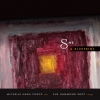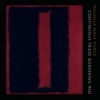- Art
- Fiction
- Non-Fiction
- Poetry
- Reviews
- A Beautiful Marsupial Afternoon
- Apart // White Papers
- Between the Crackups
- Body Sweats: The The Uncensored Writings of Elsa Von Freytag-Loringhoven
- Book of Ruth
- Cataclysm Baby
- Dusie Kollectiv 2011 Chapbook Review
- Enigma and Light
- Fault Tree
- Found Poems
- Half in Shade: Family, Photography, and Fate
- Himalaya Poems
- How Like Foreign Objects
- I'll Drown My Book: Conceptual Writing by Women
- IOVIS: Colors in the Mechanism of Concealment
- In the Futurity Lounge/ An Asylum for Indeterminacy
- Light Without Heat
- Lovely Asunder
- Madame X
- Madness, Rack, and Honey
- Madness, Rack, and Honey
- Memoirs of a Porcupine
- Memoirs of a Porcupine
- MetaMaus: A Look Inside A Modern Classic, MAUS
- N18 (Complete)
- Pier
- Red Army Red
- Schizophrene
- She, A Blueprint // Continuous Frieze Bordering Red
- Spectacle
- Stele
- Swim for the Little One First
- Test Entry Ambient Parking Lot
- The Crushing Organ
- The Grey Album: On the Blackness of Blackness
- Threshold Songs
- Thunderbird
- We Have With Us Your Sky
- Whitethorn
- Windeye
- Windeye
- Wonder Girl in Monster Land
- per se
- The Hide & Seek Muse
She, A Blueprint // Continuous Frieze Bordering Red
Michelle Naka Pierce & Sue Hammond West
She, A Blueprint
BlazeVOX, 2011
ISBN: 978-1-60964-060-6
Michelle Naka Pierce
Continuous Frieze Bordering Red
Fordham, 2012
ISBN: 9780823243051
Re-Casting Lots and Transatlantic Double-Cross
She, A Blueprint does not offer the blueprint for the female gender promised by the title; instead, it offers multiple forms, none definitive: definition becomes the purview of what may be most satisfyingly described as a lyric essay. Philosophico-theoretical pondering, while “autobiography skims the edge” (89), is devoted to an ekphrasis for a shape, “sentenced right out of her language” (46), that we can never see.
The book is concerned with language’s power to create an ‘inside’ and an ‘outside’ by way of its meaningful forms. When a woman is defined by language inimical to her very being, her ‘inside’ is invaded and she becomes nothing but ‘outside’—what she is to others. Pierce’s project, to build an ‘outside’ of an ‘inside,’ an outside such as language that a woman could inhabit, provides the governing metaphor of architecture, and perhaps of its twin, the mobius strip, the “continuous surface” (44) that language is.
Each prose-poem “Lot” is modeled after a feminist foremother, the first one unmistakably reciting Gertrude Stein’s call “not to be narrowly.” All the while, the speaker remains “unsure [. . .] if making is making a tract” (80)—that is, if it is possible to define in a positive sense what the feminine might be without creating another dictum regarding what she should be, or what ground she should occupy. Better to be abs-tract, to dwell in the no-place of possibility, even utopia, “the surface between if and is” (90) that might temporarily appear as a word.
There is a good deal of fun to be had in exploring the relationships among Sue Hammond West’s images (sometimes executed as erasures of Pierce’s texts) and the book’s layers of text and commentary; there are notes and asides (called Legends and Parcels (and ‘notes’)), unnumbered Lots, Cuts (in verse), and grids containing both text and image. Such undefined relationships encourage roaming rather than reading, so that even your progress through these spaces remains undelimited. Though nothing is explained, the book’s consistent presentations of these disparate ‘anarchitectures’ fosters trust, so that when it finally dawns on you that “Legends” are nonce (and often silly) definitions for words used in the above “Lot,” you feel let into the joke.
The book as a whole develops a via negativa which presents, to this reader, the danger of defining the feminine as that which can never be—a kind of dreary reverse essentialism; this impression is perhaps tempered by the emphasis upon the feminine as a work in progress, for “she is never really a finished construction” (86). And the book holds out hope in two ways. First, simply remaining open to possibilities is generative, since “no one ever falls through an abandon cut. Just open rue” (84). Secondly, the book’s goofy Bibliography pays tribute to a host of influences and companions on the way, sisters in the search who have made their own sturdy rooms. The playfully punning list of inspirations for the Lots is for a refined and ruined taste; its heavy corn factor stands in contrast to the more somber, searching mood of the main argument. It may be too strong to deem the relationship between these parts as ‘lost’ and ‘found,’ but the insistence, in the main text, on woman’s illocatability—the inadequacy of any temple to house her spirit—must find some relief in the sisterhood of writers lovingly lampooned here.
Continuous Frieze Bordering Red is a tour de force. It is inviting, exciting, immediately accessible and so elegantly turned that it’s inevitable, like an equation that generates infinite possibilities in a just-discovered universe. Recalling Raymond Queneau’s One Hundred Thousand Billion Sonnets, Pierce’s is a sturdy recombinant form. The headlong sentences, full of clear-headed observations and quick closures, compel the reader, in the second person, “you must keep moving.” From line 1 on the left page to line 1 on the right, you must cross the gutter; the sentences keep making and unmaking sense; you flip quickly, you have never read a book so fast. If you defy the “continuous frieze” across pages and choose to read the lines straight down, their fractured nonsense makes a sense of its own, of the elliptical kind we now take in stride, perhaps pretending we know how to negotiate the difficult terrain of being modern.
The sentences tell you how it is, unambiguously, declaratively, descriptively, propulsively: how it is to be Japanese, American, both, neither, and to be traveling to and in a third country (England) while traveling to a fourth country (art), and always departing and arriving at one’s own hybridity, cris-crossed by family, memory, and history. We are asked to see, again and again, the mundane frustrations of travel, the piquant slights of “Asiaphiles,” “your” inability to speak either the language of our mother or our father, and the loss of certain tastes, customs, and habits; we contemplate color and form, attempt to sew or cook, consider breeding programs, and persist in our peripatetic modernity. The second person presumes your participation, your already-knowing, which makes experience deceptively easy to possess, though it is precisely elusive. Though images invoked by the sentences may occasionally approach metaphor, the paratactic snap from observation to observation, line to line, creates mirage-like figures for experiences that resist the usual textures as we traverse “a seam your mother started.”
It really doesn’t matter how you read; you may travel freely, crossing from page to page or from line to line down a page; if the latter, the bump from line to line is seldom smooth, but the renegotiated sense can prove pleasing indeed. For example, on page 50, line 4, reading the ostensibly more straightforward prose across the gutter to page 51, line 4, yields “A kind of moss grown between. There was an occupation/and the space within was a space within.” But reading the same line down to line 5 on page 50, you get, “There was an occupation, / the constellations of discourse acquisition.” Lest that seem forbiddingly abstract, one can also get such earthly delights as “The immigrant is/ morsels in the notebook. Then choking”(27, lines 2,3). The book invites you, quite inexhaustibly, to such serious play. As you cross one sentence with another, you may create a hybrid that sturdily resists all pests, or perhaps one with an unexpected delicacy.
This book contemplates, too, the borderless color fields of Rothko’s Seagram Murals—now split, as it happens, between museums in the U.K., U.S., and Japan—so that certain adjacencies or crossings generate colors by working with the sense-making of the visual cortex: “When you see red on plum on black over orange, suddenly/ purple and brown appear” (58-59). Such an investigation of seeing as a process of interpretation accompanies and deepens other meditations, such as those on the death of a father: “the indistinct edges of sorrow and sadness” (13). Rothko’s murals, painted in the wake of his mother’s death, offer the spectator an environment for contemplation, “and so you must move closer then farther away in/ order to understand” (64). Such a sentence as that one deliberately scumbles its borders (two commas would clarify it) so that you must cross it more than once, get “farther away in,” to see it clearly. Such happy non-accidents abound; sometimes it seems that Pierce has made adjustments, however delicate, to support a line’s ulterior crossings, so that, say, crossing from page 35 to 36, line 3, “embark/ a new continent” is a rare locution in English, rare enough to prompt one’s reading down, from line 2 to 3 on page 36, where you get the very satisfying “no window is/a new continent. Sight becomes distorted.”
Continuous Frieze Bordering Red provides an effortlessly effective formal analogue for the complexities, sorrows, and joys of a hybrid (non)identity. Interestingly, the book is ultimately a totality or totalizing system in which almost anything is possible but escape. Well, almost; the bottoms of some pages contain lines of verse. Such a breaking of form, an allowance for the seams, an overage, promises something hors du texte, or simply the presence of an outsider. Perhaps either the total system or the marginal cry is the price one pays for existence. For now, I’ll go anywhere she wants to take me.
Melanie Hubbard won the 2011 Book Award in Poetry from Subito Press for We Have With Us Your Sky (2012). A chapbook, Gilbi Winco Swags, was published by Cannibal Books in 2008. Poems have appeared in Fence, Swink, Typo, horse less review, Cannibal, and Strange Machine. Reviews, scholarly articles, and personal essays have appeared in a variety of periodicals. She has taught at New College of Florida, Eckerd College, and the University of Tampa. She received a PhD in literature from Columbia University and is writing a book on Emily Dickinson’s poetics and practices in manuscript.

